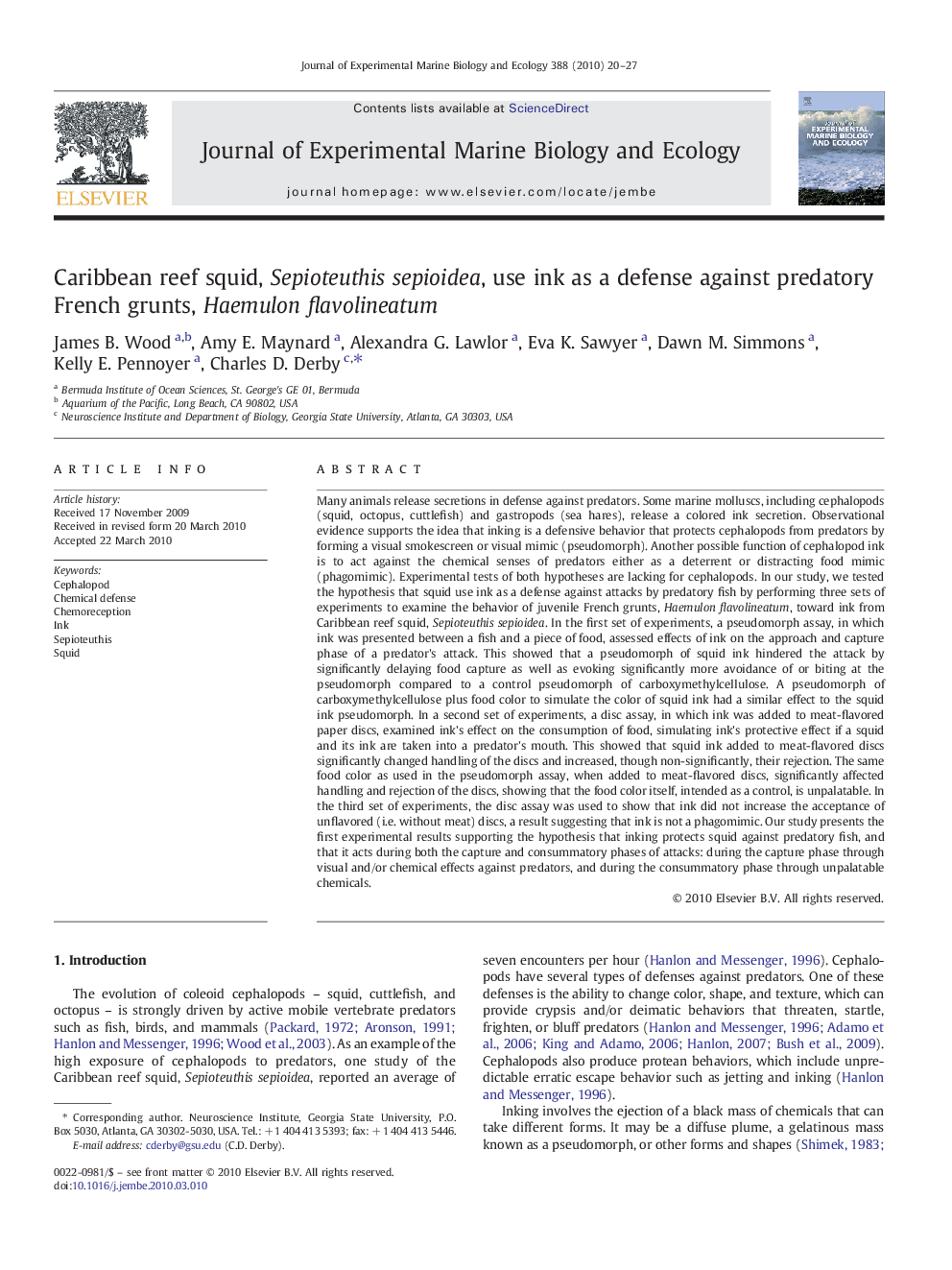| کد مقاله | کد نشریه | سال انتشار | مقاله انگلیسی | نسخه تمام متن |
|---|---|---|---|---|
| 4396714 | 1618472 | 2010 | 8 صفحه PDF | دانلود رایگان |

Many animals release secretions in defense against predators. Some marine molluscs, including cephalopods (squid, octopus, cuttlefish) and gastropods (sea hares), release a colored ink secretion. Observational evidence supports the idea that inking is a defensive behavior that protects cephalopods from predators by forming a visual smokescreen or visual mimic (pseudomorph). Another possible function of cephalopod ink is to act against the chemical senses of predators either as a deterrent or distracting food mimic (phagomimic). Experimental tests of both hypotheses are lacking for cephalopods. In our study, we tested the hypothesis that squid use ink as a defense against attacks by predatory fish by performing three sets of experiments to examine the behavior of juvenile French grunts, Haemulon flavolineatum, toward ink from Caribbean reef squid, Sepioteuthis sepioidea. In the first set of experiments, a pseudomorph assay, in which ink was presented between a fish and a piece of food, assessed effects of ink on the approach and capture phase of a predator's attack. This showed that a pseudomorph of squid ink hindered the attack by significantly delaying food capture as well as evoking significantly more avoidance of or biting at the pseudomorph compared to a control pseudomorph of carboxymethylcellulose. A pseudomorph of carboxymethylcellulose plus food color to simulate the color of squid ink had a similar effect to the squid ink pseudomorph. In a second set of experiments, a disc assay, in which ink was added to meat-flavored paper discs, examined ink's effect on the consumption of food, simulating ink's protective effect if a squid and its ink are taken into a predator's mouth. This showed that squid ink added to meat-flavored discs significantly changed handling of the discs and increased, though non-significantly, their rejection. The same food color as used in the pseudomorph assay, when added to meat-flavored discs, significantly affected handling and rejection of the discs, showing that the food color itself, intended as a control, is unpalatable. In the third set of experiments, the disc assay was used to show that ink did not increase the acceptance of unflavored (i.e. without meat) discs, a result suggesting that ink is not a phagomimic. Our study presents the first experimental results supporting the hypothesis that inking protects squid against predatory fish, and that it acts during both the capture and consummatory phases of attacks: during the capture phase through visual and/or chemical effects against predators, and during the consummatory phase through unpalatable chemicals.
Journal: Journal of Experimental Marine Biology and Ecology - Volume 388, Issues 1–2, 31 May 2010, Pages 20–27